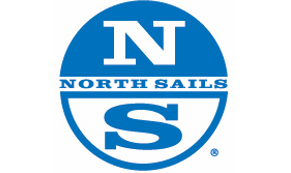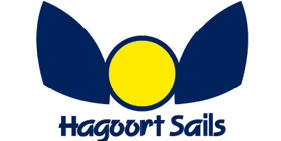Falling into a Hole - Cowes St. Malo Race
18 juli 2016 - On a simple paper chart the race from Cowes on the South coast of England, to St. Malo in French Brittany, traces a gentle 150 mile path from the ...........
Solent, past the white chalk pinnacles at the western edge of the Isle of Wight, and across the southwestern English Channel past rocks and islands to the medieval grey-stone ramparts of St. Malo. On the water this classic race has challenged, perplexed, and humbled sailors for over a century as they face fickle winds, swift and fast changing tides, and keen competition for ornate trophies and silverware from another era.
Like most offshores the Royal Ocean Racing Club St. Malo Race unfolds like a play in several acts, often with complicated plot twists, heroes and villains, and surprising endings. The year the curtain raised to reveal an armada of colorful boats closely crossing behind the start line in a surprisingly strong breeze off of Cowes. Even with hours of sailing ahead the start of a major offshore race is little different from any of the youth dingy races starting in harbors and rivers across the land. The countdown to the start, moments of anticipation and nerves, brings out our true selves; the mean kid bullying the starters around him (or increasingly, her), the whiner, the docile kid aiming to please, the leaders and the followers. After the gun it is as much barroom brawl as ballet, boats racing in close quarters and crossing tacks, harsh shouts across the water, high-stakes swordplay as boats and crews test each other and themselves
Just as the basic rules of sailing are little changed across the last century, traditional wisdom still applies to the Solent: “Wind in the South, start in the South”. This year we faced a strong tide against for the start and the first hours of the race, and the most experienced Solent racers instead gathered at the North end of the line. The starts are staggered by class, with the smaller and slower boats starting first, and the bigger and faster boats starting second. Mav has the lowest handicap of all of the bigger boats, and we try to start with good speed and out of the lee of some of the behemoths in the combined big-boat classes. The forecast called for wind in the low to middle teens, but we were on the edge with wind in the low 20s before the start, and tucked in a reef on the mainsail. It would cost us slightly in pointing and when the wind dipped, but would be welcome if the wind piped up further.
Maverick built up speed nicely as we approached the line on starboard tack, ducked below a few slower but bigger boats, and turned up hard to the wind for a tidy start. We immediately looked for a moment to tack to port, so we could head toward the coastal shallows to take advantage of lesser tide against us. Soon nearly all of the boats tacked to port and headed toward the coast, where we together ‘short tacked’ to remain in the shallower area, paying close attention not to run aground. We would normally pay close attention to the depth meter, but it picked the absolute worst time in the race to stop working and we instead kept an eye on the bigger, deeper-draft boats around us as very expensive but reasonably accurate minimum depth alarms.
As we sailed further down the Western Solent we began to overtake boats from the smaller classes and cross tacks with boats of similar speeds. We were edging close to our doublehanded sister J-120 Nunatek and after crossing twice with First 40 Arthur we found ourselves on the same tack and just above them, putting them in our lee. Far from the the true shallows Arthur's helmsman called for 'water'. In lay-terms, if a boat is sailing toward an obstruction or risking going aground, it will call for 'water' to a boat with right-of-way above them. It is a gentleman’s sport, and the right of way boat will tack to allow the other boat to tack away from the danger.
At this moment we were also passing another doublehanded boat, J-105 Diablo-J, and we were as peeved as they were by having to tack early and remain in deeper water. After Arthur tacked they sailed above us, and our speed over ground quickly dropped as we entered the fast current in the deep channel. I gestured that we wanted to tack back, with no love, and demonstrating a fundamental difference in our common language I uttered ‘asshole’ at the same moment Ken muttered ‘arsehole’. As we came back to shore we trailed Nunatek by another 100 meters, a testament to the effects of current between the main channel and closer along the coast.
The tide turned as we approached the end of the Solent and the iconic Needles. The short wind-driven waves soon gave way to irregular and chaotic chop, and we picked up speed over ground as the tide flushed us out the narrows. In Act I we managed a reasonable run out of the Solent and lay in a good position within our class, while Act II would open with a long upwind beat toward France.
In the bumpy conditions and stiff breeze we continued to hand-steer, and sailed quickly and high on the wind. Nunatek sailed lower and later slightly slower, and we began to overtake lead boats in the smaller classes like Foggy Dew and Winsome. We spotted a target ahead --- the generally faster, fully crewed J-111 British Soldier. A few hours into the leg we worked above them and closed to within 50 meters, and as the wind dropped slightly to the high teens the shook out their mainsail reef and edged further ahead. We followed suit and soon pulled along side and upwind, but exchanged waves as we edged past them.
The course skirts the edge of the shipping lanes; one minute we’d spot the far-off shadow of a freighter ahead, and minutes later it would churn past at impressive speed. As darkness fell we neared the first outcrop along the French coast, the ominously named ‘Les Casquets’ (The Caskets). It marks the northern edge of the Channel Islands, with tides racing around submerged sea-mounts, islets and ridges. We approached the lighthouse with weak tide with us, while British Soldier elected to pass much closer in. They parlayed local knowledge and some nerve into a quarter mile advantage, but we again had a target ahead to focus on.
Just past the Casquets we fell slightly off the wind and opened Act III. Mav loves the sheets eased slightly and eagerly raced ahead, allowing her to crew to also ease off slightly as she powered smoothly through the waves. Time for coffee and chocolate, and for each of us to indulge in a short break below. Perhaps also wanting to take part in a favorite French summer pastime, and expressing solidarity with our depth meter, our speed meter now decided to go on strike. This skewed the numbers for the other meters, and on one hand it was dark and the meters were useless, but on the other hand we have faced this problem before and sailing old school posed little problem.
Our next mark was Les Hanois, several rocky islands at the western edge of Guernsey, and we remained in favorable current further offshore before tacking back toward the lighthouse. Through the night we had worked past Shaitan and then British Soldier, and as we passed Les Hanois we also took small pleasure to see Arthur sailing well behind. With over 40 miles to the finish it was no time for overconfidence, and we continued to push hard.
Our last mark was the Les Minquiers, another lighthouse marking shoals and rocks off the coast of Jersey. The tide began to turn against us several miles out, and we soon crawled against a 2-3 knot current. We decided to sail in close to the lighthouse and rock shelf, to get some relief from the tide, and Ken checked the navigation computer regularly. As we closed to within a half mile he popped up and advised “The computer has decided to update itself”. Yet another labor action by our electronics staff, so we would have trust our timing and perspective to decide how close to sail to the rocks. In the next few minutes the tide dropped and then propelled us ahead as we sailed into an eddy. As first light glowed on the horizon we tacked away and benefitted from this final push, turned the corner, trimmed for the new course and the finish scarcely 15 miles away.
I can now confess to a moment of overconfidence. We enjoyed a steady though weakening breeze but Shaitan lay nearly 4 miles back and Nunatek struggled around ‘The Minkies’ and fell nearly 2 miles behind. We held a modest lead in our class and we looked forward to the finish and Fruit-de-Mer in St. Malo.
The week before Maverick's three double handed crew -- Raymond, Ken and I -- joined up for the long delivery trip from Scheveningen to Cowes. Soon after departing the wind rose to the mid 30’s, and well into my 5th decade I finally had a moment of mature judgment. We pitched about in the darkness, the three amigos were three men in a tub, and I decided to return to Scheveningen to wait for better conditions. We set out again 5 hours later with wind forecast on the 20’s but 8 hours later, off the southern Dutch coast, wind shrieked in the 40s and Raymond and Ken went forward to drop and tame the jib while I worked mightily to hold Mav steady in 5m seas. At that moment my greatest wish was for flat seas and sunshine, champagne sailing and the simple chance to eat, shit and sleep normally. A week later, as we rounded 'The Minkies', was the worst possible time for my wish to be fulfilled.
I went below for a rest, premature visions of a gilt trophy and a pocket full of points in the season standings. The gentle rocking over waves and gurgling of water moving past the hull soon gave way to stillness and luffing of sails, and came back above, with far greater angst and anger than in the middle of a gale on the North Sea. A short three-syllable cadence of the f-word as the wind fell to a light breeze, and then away altogether. Nearing the end of this final Act I felt like Richard II, confused and desperate, crying out “My kingdom for some wind!”.
As we drifted slowly, catching a whisper now and then, we changed down to the light weather jib, and worked toward the west to not be caught against the tide when the wind returned. Later we could make out the dark sails of Shaitan and Nunatak moving slowly in the distance, steadily eating away our lead and then moving ahead. We spent hours in this cruel lull, at one point slowed slightly by a long tail of seaweed on the rudder but mercifully distracted by trying to clear it. By the time a weak coastal breeze filled in our competition had sailed miles past, but with a deeper angle to the finish we set the A0 spinnaker. We picked up speed and managed a final steady run toward the finish, closing in on Nunatek and Shaitan but running out of time.
The curtain rises for the Epilogue at the St. Malo Yacht Club, teams gathered for refreshments and banter, speeches and trophies. Much of the fleet still drifted in the tide in the flat water off St. Malo, sailing slowly toward the finish. We learned we took 3rd place in a formidable double handed class, a welcome consolation after the agony of the lull. Shaitan persevered and fittingly won the class, and Nunatek nicely played the tides and patchy wind and earned second. Unfortunately the perfect Summer weather arrived several hours too early for Maverick, but we now had time to enjoy the bright sunshine, soft breeze, fresh Fruit-de-Mer, and the captivating beauty of Brittany.
Intention in Round The Island
14 juli 2016 - Na 85 jaar (…since 1931) nog steeds een springlevend evenement met 1533 ingeschreven boten. Deze editie was een spektakel met een stevige bries (20-35 kn) en ... Lees verder
Team Flanders-North Sea in Brewin Dolphin Commodores Cup 2016
5 augustus 2016 - Team Flanders-North Sea scoorde een top resultaat in de 2016 editie. Deelname aan de Brewin Dolphin Commodores’Cup behoort voor de wedstrijdzeiler tot de mooiste ervaringen. Zev... Lees verder













